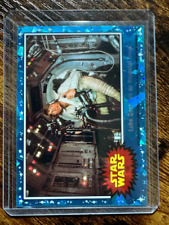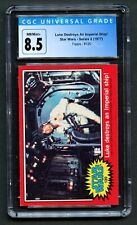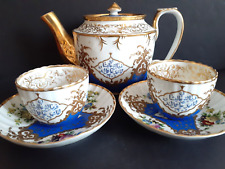An Imperial Pietra Dura Plaque Of The Billiard Players rare painting in stone For Sale

When you click on links to various merchants on this site and make a purchase, this can result in this site earning a commission. Affiliate programs and affiliations include, but are not limited to, the eBay Partner Network.
An Imperial Pietra Dura Plaque Of The Billiard Players rare painting in stone:
$90500.00
Replica Pietra Dura Stone PaintingAn Imperial Pietra Dura Plaque Of The Billiard Players
Original sold at US$905000/- on Christie's on at New York 11th December 2014with the title An Imperial Pietra Dura Plaque Of The Billiard Players
Will consider every serious offer
AFTER THE DESIGN BY GIUSEPPE ZOCCHI (FIESOLE 1711- FLORENCE 1767), GRAND DUCAL WORKSHOPS (OPIFICIO DELLE PIETRE DURE), FLORENCE, CIRCA 1752-1755
AN IMPERIAL PIETRE DURE PLAQUE OF THE BILLIARD PLAYERSAFTER THE DESIGN BY GIUSEPPE ZOCCHI (FIESOLE 1711- FLORENCE 1767), GRAND DUCAL WORKSHOPS (OPIFICIO DELLE PIETRE DURE), FLORENCE, CIRCA 1752-1755In a molded ormolu frame, the reverse inscribed 1702 V / III 7 / A…
Truly ‘a painting in stone’, the Game of Billiards is a magnificent example of the art of Florentine pietre dure. It also was once part of one of the most impressive and celebrated commissions ever produced by the Grand-Ducal workshops in Florence, the group of more than sixty pietre dure panels created for the Francis Stephen of Hapsburg-Lorraine, Grand Duke of Tuscany and husband of Empress Maria Theresia of Austria. The appearance of the Game of Billiards, missing since it was commissioned in the 1750s, and only briefly surfacing on the Florentine art market in the 1870s, is a tremendously exciting re-discovery.
Established in 1588, under the direct supervision of Prince Ferdinando I de’ Medici, the Grand Ducal workshops for pietre dure, inlaid semi-precious or hard-stone, was called the Opificio delle Pietre Dure. Almost immediately, the workshops became famous for producing some of the most beautiful objects and furniture of the Renaissance. The ambitious aim of Ferdinando de’ Medici was to actually challenge the primacy of painting and to create paintings in stone that would rival or exceed the more traditional definition of the Fine Arts (Giusti, 2007, p. 4). Throughout the seventeenth century its popularity continued, with Italian and Grand Tourists alike competing to buy the Opificio’s production. But, by the early 18th century, Florentine artistic production, which had been on a slow but consistent decline since its high-point during the Renaissance, only accelerated after the death of the last Medici Grand Duke Gian-Gastone in 1737. The Florentine pietre dure workshops had deteriorated as well, and without significant commissions, their production suffered in both quality and design. However, when Francis Stephen became Grand Duke of Tuscany, the workshops again began producing pieces that were the marvel and envy of every European court and collector.
The Game of Billiards is, very simply, a perfect example of the art of pietre dure in this period. The stones are both varied and rare, the colors are dazzling but with a sophisticated palette and the workmanship is flawless. The composition was designed to please the eye – but also to impress, even astonish – and the late afternoon light, with the dramatic contrasting light and shadows along the crisp architectural lines is brilliantly and subtly illustrated. While the scene is largely a stage-set with both the grand architectural surroundings and the charming characters giving a theatrical impression, there are intimate and informal elements also included. As Giusti has noted in other of Zocchi’s designs, there is a sense of reality and believably, which is illustrated in the Game of Billiards with the elements in the foreground such as the billiard cues lying on the floor, the cloak carelessly thrown over one stool and another stool overturned (W. Koeppe and A. Giusti, Art of the Royal Court: Treasures in Pietre Dure from the Palaces of Europe, Metropolitan Museum of Art, New York, 1 July – 21 September, 2008, p. 296).
FRANCIS STEPHEN, GRAND DUKE OF TUSCANY AND ZOCCHI’S COMMISSION
Despite the title of Grand Duke of Tuscany, as the consort of Empress Maria Theresia of Austria, Francis Stephen remained in Vienna and only visited the city once in 1739. This distance did not prevent him from being an incredibly active patron of the Grand-Ducal workshops.
In 1748, the French goldsmith Louis Siriès, was hired to be the Director of the Florentine Grand-Ducal workshops. As Giusti notes, for Siriès’s first two years as director, he sent various table-tops and caskets similar to what the Opificio had been producing for the past 150 years to Vienna. But in 1750, Siriès proposed an ambitious and original initiative – to create a picture cabinet in stone – something that no other European court could boast (Ioffer., p. 5). In that same year, Siriès hired Giuseppe Zocchi, who had become well-known for his series of engravings Views of Florence published in 1744. Zocchi, who worked under the direction of Siriès for the Opificio for seventeen years until his death, produced designs for some of the most celebrated pietre dure panels ever produced by the Opificio. And between the years 1750 and 1762, he provided more than sixty oil sketches to be then transformed into pietre dure panels – often in large series such as the Fine Arts, which included Music, Painting, Sculpture and Architecture (Koeppe and Giusti, op. cit., p. 292). Some of the other most famous groups are theElements, the Senses, the Ages of Man, the Seasons, the Continents and, of course, the Games, the series to which the present panel belongs. These series represented a major break in the Opificio’s production, because, up until the mid-18th century, production of pietre dure was largely devoted to still-lives of birds, flowers and fruits and decorative frameworks and borders but with only infrequent, and not particularly successful, attempts at the human figure (Giusti, 2007, p. 4). If human figures were attempted at all, they were usually included in larger landscape and were minor features of the pietre dure compositions. With the designs by Zocchi, however, there is a dramatic departure, and these new compositions can be directly compared to contemporary genre paintings, particularly those of Watteau, Boucher and most clearly, Claude-Joseph Vernet. The compositions are incredibly sophisticated and detailed, and clearly appealed to Francis Stephen.
Between 1750 and 1760, no fewer than twenty-nine designs by Zocchi were produced for Francis Stephen and the series of six Giochi, or Games, was one of the first produced. These included the Altalena (Swing), the Volano(Badminton), the Gioco del pallon Grosso (Pallone), the Tiro con l’Arco(Archery), the Pallacorda (Tennis) and, of course, the Biliardo, the Game of Billiards, the present lot. All of these pictorial models are still conserved in the Museo dell’Opifico delle Pietre Dure, like the other designs for the Vienna series (Ioffer., p. 7). Zocchi was paid for the Games series in groups of two paintings at a time and the exact dates and amounts, 12 scudi per painting, were discovered in the Opificio’s archives by Giusti. Zocchi was paid for the Altalena and the Volano on 23 November 1751; for the Gioco del pallon Grosso and the Tiro con l’Arco on 12 February 1752; and for thePallacorda and Biliardo on 26 May, 1752 (Florence, 2009, op. cit., [catalogue entry by A. Giusti], p. 244.). Besides Zocchi’s finished composition in the Museo dell’Opifico delle Pietre Dure, a pen sketch of the Game of Billiardsalso still exists in the Uffizi and, as Giusti notes, there is almost no difference between the first early sketch and the final pietre dure compostion (Ioffer., Gabinetto Disegni e Stampe degli Uffizi, inv. N. 6511 S). Many of the others have multiple changes, suggesting that Siriès was possibly involved with each composition right from the beginning.
Sadly, however, the Florentine documents do not record the dates that the pietre dure panels were completed, nor when they were shipped to Vienna, but they were generally sent within two to three years after the designs were submitted. And the precise documentation ends there. Despite all the others from this group being sent to Francis Stephen, the Game of Billiards was not shipped to Vienna for some reason, and never entered the Imperial Austrian collections at the Hofburg. For this reason, Distelberger, in his 2002 exhibition, did not realize the Game of Billiards even existed (op. cit., p. 345). The others from this series were displayed first at Francis Stephen’s Kaiserhaus, on the Wallnerstrasse in Vienna and then, after 1791, at the Imperial Mineralogical Collection at the Hofburg Palace. By 1840-41, they were all displayed in the State Apartments (now the Pietre Dura Zimmer) at the Hofburg. They remain there to this day, as part of the reception rooms of the President of the Republic of Austria. Interestingly, the only pietre dure panels that are recorded as having left the Imperial Austrian collections are the Five Senses, which were a gift from Emperor Josef II, the son of Francis Stephen, to the Russian Imperial family, who installed them in the famous Amber Room of the Catherine Palace at Tsarskoye Selo.
THE 19TH CENTURY PROVENANCE
The Game of Billiards surfaced on the art market in Florence at the beginning of 1871, and Giusti has discovered detailed documentation recording this moment (Giusti, 2007, pp. 11-12). Luca Battelli, the antiquarian, proposed to the director of the Royal Gallery of Florence that he was ‘…in possession of a mosaic painting of Florence portraying a game of billiards, executed in the early years of the last century in the Royal Academy of the Pietre Dure…’ and that ‘…this object which, in the opinion of the experts, is considered the finest work to have emerged from aforesaid Academy.’ The Director replied on January 25, 1871 proposing to purchase the ‘…work executed in our Royal Opificio in the last century, considering that the restoration of a work so important for its history could be significant for the Gallery of the Opificio. The Director of works [the Director of the Opificio], Signor Cavalier Niccolò Betti, who has examined the work, confirmed what I mention above in terms of both the beauty of the commesso in pietre dure and of its historic importance, as it was undoubtedly executed in the Royal Opificio since the oil model for the same is still in existence there.’ The timing, however, was inopportune, as the gallery had just been established with the founding of the Kingdom of Italy exactly ten years earlier, and the Minister of Education, Cesare Correnti, responded immediately there was no question of an acquisition as ‘…the Ministry is ready to sell even the ancient works of the Opificio delle Pietre Dure.’ And indeed the Opificio had already begun to sell pieces from its collections to offset the lack of state support. After this correspondence, theGame of Billiards disappeared until its recent discovery.
The Game of Billiards still conserves its original ormolu frame. It is straight and molded, unlike all the pietre dure panels in the Hofburg, which are in curved molded ormolu frames. It has been noted that the Hofburg frames were all changed in the 1840s – but it is not known what they looked like earlier. Another recently rediscovered pietre dure panel, also after Zocchi’s design depicting the Allegory of Architecture, was sold Sotheby’s, Paris, 7 November, 2013, lot 193 (€1,463,900). It also retained its original ormolu frame, also curved, and, in this case, as A. González-Palacios points out in his catalogue entry, it was supplied in 1754 by one of the craftsmen in theGalleria Dei Lavori known as Bombicci. As the Game of Billiards was from the same time, it is possible the present frame was also by Bombicci. And so, along with its original frame, the Game of Billiards remains exactly as it was when it was finished in the 1750s.
That is the beauty of ‘painting in stone’ – it is permanent and can never change.
Christie’s would like to thank Dr. Annamaria Giusti for her help with the research of the Game of Billiards.Provenance
Almost certainly commissioned by Francis Stephen of Lorraine (1708-1765), Grand Duke of Tuscany from 1737 and later Francis I (1745-1765), Holy Roman Emperor and Consort to Empress Maria Theresia of AustriaWith Luca Batelli, art market, Florence, 1871Literature
R. Distelberger, Die Kunst des Steinschnitts: Prunkgefäße, Kameen, und Commessi aus der Kunstkammer, Kunsthistorisches Museum, Vienna, 17 December, 2002 – 27 April 2003, p. 345A. Giusti, Un capolavoro ritrovato: Il gioco del biliardo, Florence, 2007 (privately printed)Exhibited
Il fasto e la ragione: Arte del Settecento a Firenze, Galleria degli Uffizi, Florence, 30 May – 30 September, 2009, no. 88, pp. 246-247.
If You like what you are seeing, please add us as favoritesellerYou are offerding on / Buying Replica of Florentine Italian Landscape / Panoramic / countryside view Pietra Dura Plaque which will increase value of your antique & art collection as well as a gift for your loved ones. No artificial stones or colorsused and will remain as it is for hundreds of years.
Uniqueness: This Pietra Dura is totally hand made with 100% natural stones, no artificial stones or colorsused, Hence will no two piece can be exactly same, every piece is a unique piece and can be only similar in design & require greater tolerance in compare to machine made products.
This Pietra dura (Pietre dure) marble inlay rectangular Mosaic Plaque (Painting, Picture)of 106 X 81 Cm and 20 mm thick weight is around 50 kg. front side Mirror finish and backside is honed finished.
Inlay Pietra dura is artistry on stone or marble. Different type of semiprecious & rare color stones like Agate, Amethyst, Rose, Blue & Green Aventurine, Carnelian, Jasper, Lapis-Lazuli, Malachite, Mother of Pearl, Sodalite, tiger’s Eye, Onyx are cut, shaped then inlay ed in base stone & polished to make a long lasting beauty which can be used for dining table, coffee table, centertable, floor inserts, border, flooring, wall panel, decorative piece etc.
style="text-decoration:none" browser does not support JavaScript.To view this page, enable JavaScript if it is disabled or upgrade your browser. Related Items:
2022 Topps Chrome Star Wars Sapphire ~ #120 Luke Destoys an Imperial Ship
$4.00
Luke Destroys An Imperial Ship #120 Star Wars Red Series 2 Topps 1977 CGC 8.5
$135.00
Rare 19th C. Imperial Russian Gardner Tea Set With An Islamic Inscriptions
$1900.00




